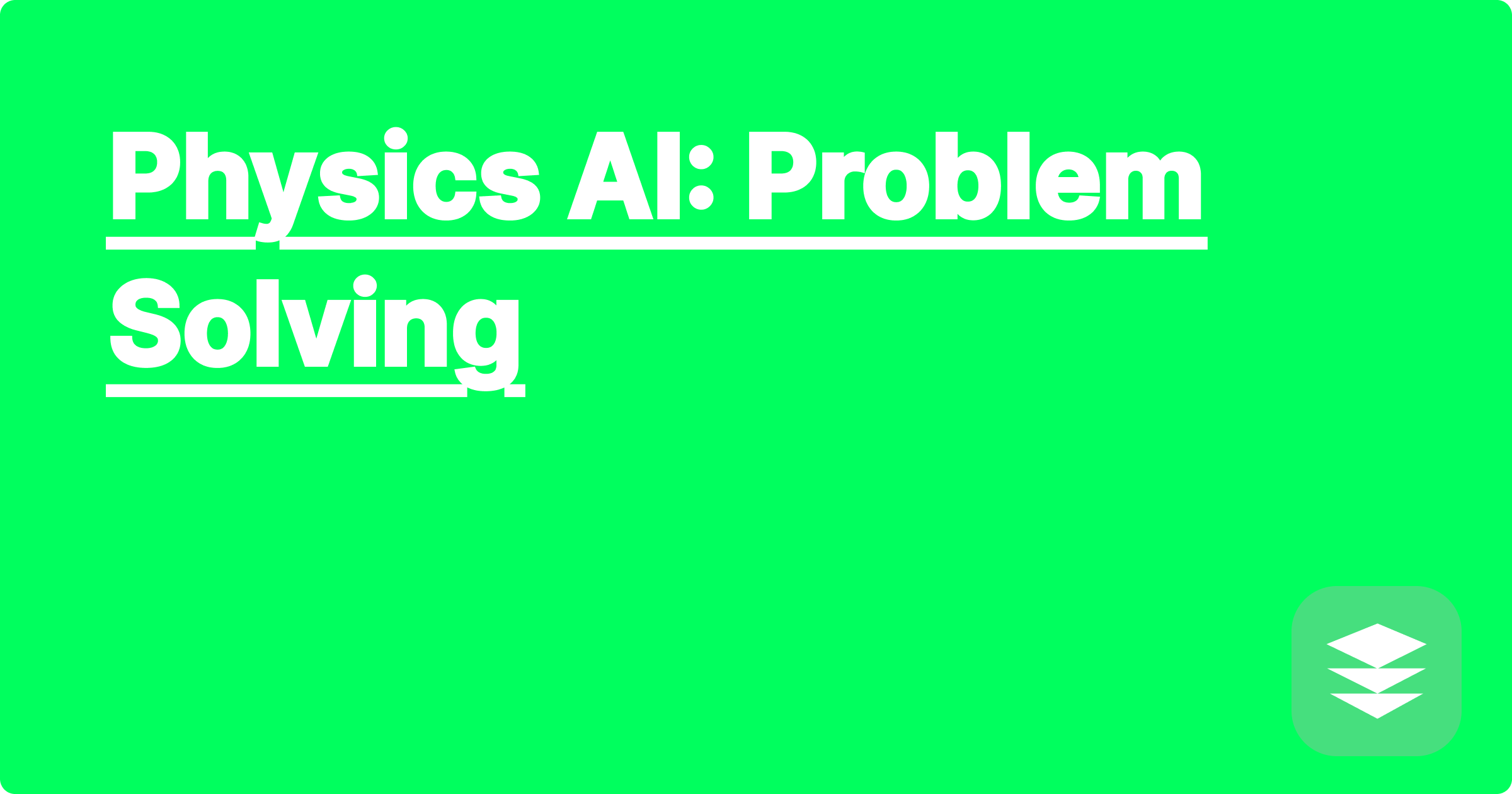
The intersection of physics and artificial intelligence presents a compelling opportunity to tackle complex scientific challenges. Physics, with its intricate equations and abstract concepts, can often be a daunting subject for students and even seasoned researchers. AI, with its ability to process vast amounts of data and identify patterns, offers a powerful toolkit for problem-solving in physics. This synergy allows us to explore new frontiers in scientific discovery and streamline the learning process for aspiring physicists.
This emerging field of "Physics AI" has profound implications for STEM students and researchers. It offers a new paradigm for understanding and applying physical principles. By leveraging AI tools, students can enhance their problem-solving skills, gain deeper insights into complex concepts, and accelerate their learning journey. Researchers can utilize AI to automate tedious calculations, explore new hypotheses, and push the boundaries of scientific knowledge. The integration of AI into physics education and research promises to revolutionize the field and empower the next generation of scientific innovators.
Physics problems, particularly those involving complex systems or intricate mathematical formulations, can pose significant challenges. These challenges often stem from the difficulty in visualizing abstract concepts, manipulating complex equations, or integrating multiple physical principles. For instance, understanding the behavior of a multi-body system in classical mechanics requires a thorough grasp of Newton's laws of motion and the ability to solve coupled differential equations. Similarly, analyzing the energy levels of an atom in quantum mechanics necessitates familiarity with Schrödinger's equation and its solutions. These problems often require substantial computational effort and a deep understanding of the underlying physical principles. Moreover, the sheer volume of information and the intricate relationships between different concepts can be overwhelming for learners. Therefore, effective tools and strategies are needed to simplify these complex problems and make them more accessible to students and researchers.
AI tools like ChatGPT, Claude, and Wolfram Alpha offer powerful capabilities for solving physics problems. ChatGPT and Claude can be used to understand the conceptual background of a problem, generate explanations for different physical phenomena, and even guide the problem-solving process through interactive dialogue. Wolfram Alpha excels at symbolic computation, allowing users to solve complex equations, perform numerical calculations, and visualize mathematical functions. By combining the strengths of these different AI tools, we can create a comprehensive approach to tackling physics problems. For example, one might use ChatGPT to understand the underlying principles of a problem, then utilize Wolfram Alpha to perform the necessary calculations and visualize the results. This integrated approach leverages the unique capabilities of each AI tool to provide a more efficient and insightful problem-solving experience.
Begin by clearly defining the problem you want to solve. This involves identifying the relevant physical principles, specifying the given information, and stating the desired outcome. Once the problem is clearly defined, you can choose the appropriate AI tool for the task. For conceptual understanding and problem-solving guidance, ChatGPT or Claude can be effective. For symbolic calculations and numerical analysis, Wolfram Alpha is often the preferred choice. Next, input the problem statement into the chosen AI tool. This may involve typing the problem description into a chat interface or entering the relevant equations into a computational engine. Then, analyze the output provided by the AI tool. This might involve interpreting the generated explanations, verifying the calculated results, or visualizing the graphical representations. Finally, refine the input or query as needed to obtain the desired results. This iterative process allows you to explore different approaches and gain a deeper understanding of the problem.
Consider the problem of calculating the trajectory of a projectile launched at a specific angle and velocity. Using Wolfram Alpha, one can simply input the relevant equations of motion, including the initial conditions, and obtain the projectile's trajectory as a function of time. The output will include both numerical values and graphical representations of the trajectory, providing a comprehensive solution to the problem. Another example involves understanding the concept of quantum entanglement. ChatGPT can provide a detailed explanation of this phenomenon, including its implications for quantum computing and communication. Furthermore, one can use Wolfram Alpha to calculate the entangled states of a two-qubit system and visualize their behavior. These practical examples demonstrate the versatility and power of AI tools in solving a wide range of physics problems.
To effectively utilize AI in STEM education and research, it is crucial to develop a strong foundation in fundamental concepts. AI tools should be viewed as supplements to, not replacements for, traditional learning methods. It is essential to critically evaluate the output generated by AI tools and understand the underlying assumptions and limitations. Blindly accepting AI-generated results without careful consideration can lead to misconceptions and errors. Furthermore, actively engaging with the material through problem-solving and experimentation is crucial for developing a deep understanding of the subject matter. AI tools can facilitate this process by providing immediate feedback and allowing students to explore different scenarios. By combining the power of AI with a solid understanding of fundamental principles, students can significantly enhance their learning experience and achieve greater academic success.
Conclude by emphasizing the transformative potential of AI in physics education and research. By embracing these powerful tools and developing the necessary skills, students and researchers can unlock new possibilities and advance the frontiers of scientific knowledge. Explore the various AI tools available, experiment with different approaches, and discover how AI can empower you in your academic pursuits. The future of physics problem-solving is here, and it is powered by AI.
AI Robotics: Simulation & Design
Chemistry AI: Study & Practice
Bio AI Solver: Biology Problems